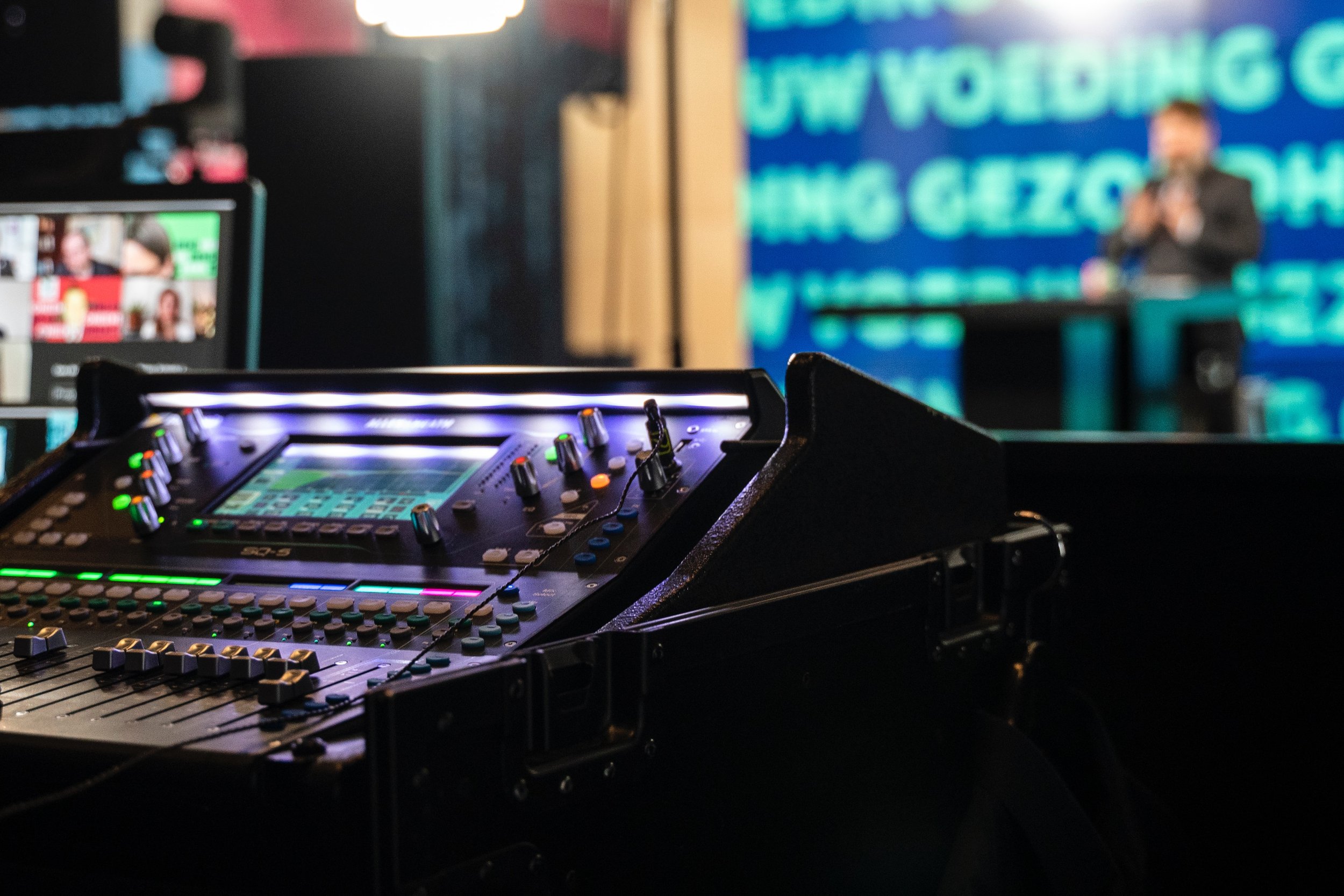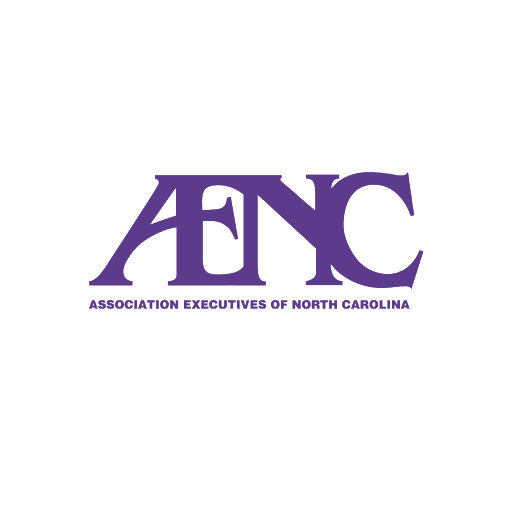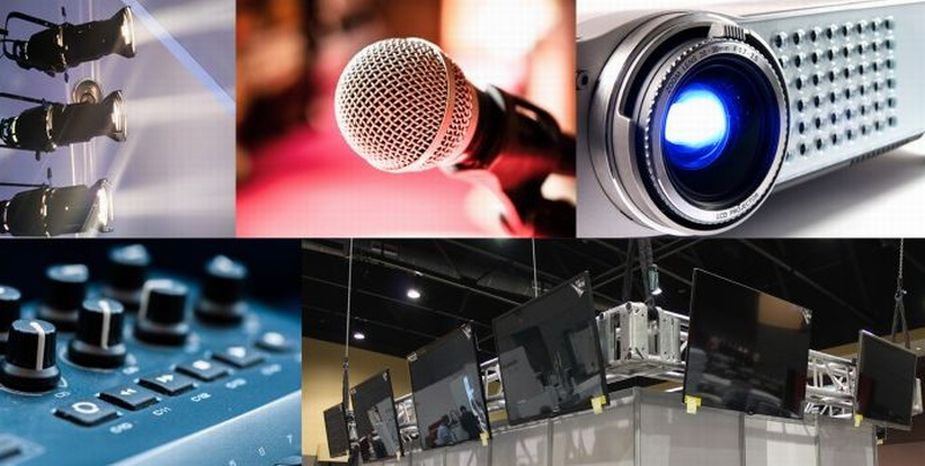How audio visual charlotte nc simplifies equipment management
Wiki Article
Recognizing the Addition of Audio Visual Technology in Today's Educational Environments
The assimilation of audio-visual innovation in educational setups has changed the mentor and finding out process. Educators currently have access to tools that deal with different discovering styles, boosting trainee involvement and cooperation. Nevertheless, the consolidation of these technologies presents both possibilities and difficulties. Recognizing exactly how to properly execute these devices is vital. What strategies can teachers utilize to take full advantage of the benefits of audio-visual innovation in their classrooms?The Advancement of Audio-Visual Modern Technology in Education And Learning
As academic needs evolved over the years, audio-visual modern technology undertook significant makeovers that improved the learning environment. Tools such as film projectors and slide programs were the primary ways of incorporating visual aspects right into classrooms. These early modern technologies offered instructors with the ability to existing information dynamically, yet they were limited in ease of access and interactivity.With the advent of video cassette recorders in the 1970s, classrooms started to include recorded lessons, expanding the extent of instructional sources. The intro of computers in the 1980s more changed this landscape, enabling the development of multimedia discussions and interactive knowing experiences.
The rise of the internet in the 1990s marked a pivotal moment, enabling real-time accessibility to a wealth of audio-visual materials. Today, digital devices such as interactive white boards and on the internet knowing platforms remain to improve the educational experience, promoting interaction and partnership among learners.
Benefits of Audio-Visual Equipment for Diverse Understanding Styles
Audio-visual devices play a necessary duty in providing to varied discovering designs by enhancing visual knowing and enhancing auditory engagement. By incorporating photos, video clips, and noise, these innovations produce a more inclusive instructional setting. This diverse approach permits educators to address the diverse choices and requirements of students effectively.Enhancing Visual Discovering
Engagement in the understanding procedure is noticeably boosted with making use of audio-visual devices, catering to various discovering designs. These tools, such as videos, infographics, and interactive discussions, give visual stimuli that assist comprehension and retention. Visual students, specifically, take advantage of the consolidation of images and animations, which can streamline complex ideas and improve understanding. Furthermore, audio-visual sources can illustrate real-world applications, making finding out more pertinent and appealing. By integrating shade, movement, and sound, educators can develop a dynamic knowing setting that catches students' focus and fosters much deeper cognitive connections. Inevitably, the tactical usage of audio-visual innovation not only supports aesthetic knowing however also enhances the overall instructional experience for diverse students.Improving Auditory Engagement
A substantial advantage of integrating audio-visual devices in education is their capability to boost acoustic involvement amongst trainees. These devices, which incorporate multimedia discussions, podcasts, and interactive audio components, provide to different discovering designs, especially profiting acoustic learners (audio visual charlotte nc). By integrating noise and narration, teachers can develop immersive experiences that record students' interest and strengthen understanding. This involvement is necessary, as it fosters a deeper understanding of the product and advertises retention. In addition, audio-visual tools can assist in joint understanding settings, urging pupils to join conversations and share their understandings. Inevitably, the consolidation of audio-visual technology not only supports auditory engagement however likewise enhances the general academic experience, making finding out more vibrant and reliable for all pupilsEnhancing Involvement Via Interactive Knowing

In addition, gamification aspects, such as tests and simulations, can improve inspiration and retention, making finding out more satisfying and efficient. These approaches not just stimulate cognitive involvement but additionally cater to varied understanding styles, ensuring that all trainees can participate meaningfully. Because of this, interactive learning atmospheres cultivate a sense of neighborhood and belonging, inevitably resulting in boosted scholastic outcomes. With the integration of audio visual technology, teachers can change typical class right into dynamic areas where pupils flourish and proactively shape their educational journeys.
Linking Concept and Method With Multimedia Resources
Multimedia sources work as a vital link between academic concepts and practical application in academic setups. By boosting interaction, promoting joint knowing experiences, and sustaining varied understanding designs, these devices develop a more inclusive and dynamic knowing atmosphere - audio visual charlotte nc. This technique not just cultivates deeper understanding but also prepares students for real-world difficulties
Enhancing Engagement Through Multimedia
Engagement in educational settings significantly boosts when trainers incorporate multimedia sources right into their teaching approaches. The usage of videos, podcasts, and interactive discussions improves the finding out experience, enabling pupils to get in touch with the product on several levels. Multimedia resources deal with different learning styles, providing aesthetic, acoustic, and kinesthetic stimuli that can hold pupils' interest better than conventional lecture approaches. In addition, these sources can simplify intricate ideas, making them much more obtainable and unforgettable. By integrating multimedia, educators can develop a vibrant classroom setting that fosters inquisitiveness and inspires learners. Ultimately, the critical use audio-visual modern technology serves to link the gap between theoretical understanding and useful application, enhancing the academic experience for both teachers and pupils.Promoting Collaborative Understanding Knowledge
Countless research studies suggest that collaborative learning experiences considerably improve student results when incorporated with multimedia resources. Multimedia devices help with communication amongst pupils, allowing them to involve in problem-solving and vital assuming collectively. By using video clip conferencing, collaborative platforms, and interactive discussions, educators produce settings conducive to team effort and shared discovering. These innovations make it possible for students to communicate their ideas effectively and get prompt feedback, fostering a deeper understanding of the topic. In addition, multimedia sources can offer intricate principles in more digestible styles, promoting discussion and cooperation. As an outcome, the mix of collective understanding and audio-visual technology not only improves the instructional experience yet likewise prepares trainees for real-world teamwork dynamics, highlighting the relevance of teamwork and collective expertise building.Supporting Diverse Discovering Styles
While typical training approaches often cater to a limited series of learning choices, the assimilation of audio-visual modern technology supplies a much more inclusive technique to education. By employing multimedia sources such as video clips, interactive simulations, and digital presentations, educators can resolve numerous discovering styles, including visual, acoustic, and kinesthetic. This flexibility permits set apart direction, enabling pupils to engage with content in manner ins which resonate with their specific preferences. In addition, audio-visual devices can help with much deeper understanding by offering several depictions of complicated concepts. Because of this, students that might deal with conventional approaches can discover alternative paths to success, fostering a much more fair discovering environment that sustains academic success for all learners.Obstacles in Executing Audio-Visual Modern Technology
Although audio-visual innovation holds excellent promise for boosting educational experiences, its application usually experiences substantial difficulties. One key problem is the financial problem linked with purchasing and preserving such devices, which can stress budgets, especially in underfunded establishments. Additionally, inadequate training for teachers can hinder efficient assimilation, leaving them ill-prepared to make use of the innovation fully. Technical issues, such as software application malfunctions and compatibility issues, may likewise interrupt lessons and irritate both educators and pupils. Moreover, varying levels of student access to technology outside the class can produce differences in discovering chances. Ultimately, the potential for over-reliance on technology might interfere with crucial training techniques, eventually limiting the instructional experience. Dealing with these challenges calls for a thorough strategy, consisting of sufficient funding, specialist advancement, and equitable access to sources, to ensure that audio-visual technology can be leveraged properly in today's academic settings.Best Practices for Integrating Technology in the Classroom

In addition, fostering an interactive atmosphere with joint devices urges pupil engagement and participation. Utilizing varied audio-visual resources caters to different discovering designs, fitting aesthetic, acoustic, and kinesthetic learners. Frequently examining the impact of modern technology on pupil learning assists instructors fine-tune their approaches and adapt to altering requirements. Including students in the selection of innovation promotes ownership and inspiration. By sticking to these finest methods, educators can develop a vibrant classroom ambience that properly incorporates technology and enhances the instructional experience for all trainees.
The Future of Audio-Visual Innovation in Education
As class progressively welcome technology, the landscape of audio-visual devices in education and learning remains to advance (audio visual charlotte nc). Future innovations are anticipated to concentrate on better interactivity and customization, permitting teachers to customize finding out experiences to private student requirements. Innovations such as enhanced truth (AR) and digital truth (VR) will likely offer immersive knowing environments, boosting trainee engagement and understanding
Artificial intelligence (AI) is positioned to play a significant function in audio-visual modern technology by providing real-time responses and adaptive knowing pathways. This combination might help instructors identify and attend to pupil challenges better. Cloud-based platforms will certainly promote simpler access to sources and collaboration among trainees and educators, no matter of location.
In addition to these technological breakthroughs, expert growth for instructors will certainly be vital, ensuring they are geared up to use these tools successfully. On the whole, the future of audio-visual innovation in education guarantees to develop even more vibrant, comprehensive, and impactful understanding experiences.
Frequently Asked Questions
How Can Teachers Pick the Right Audio-Visual Devices for Their Class?
Selecting appropriate audio-visual tools calls for educators to analyze their instructional objectives, consider student requirements, evaluate available modern technology, and look for suggestions from peers or experts, making certain devices successfully improve knowing and engagement within their specific class setting.What Budget plan Factors to consider Are There for Applying Audio-Visual Modern Technology?
Budget plan considerations for implementing audio-visual modern technology consist of initial acquisition expenses, upkeep expenditures, training for team, and prospective software licensing costs. Furthermore, lasting financial investment in updates and replacements should additionally be factored into financial preparation.Are There Specific Training Resources for Teachers on Audio-Visual Devices?
Lots of institutions supply training resources for instructors on audio-visual devices, consisting of on-line programs, workshops, and training guides. These sources intend to improve educators' skills and self-confidence in effectively incorporating technology right into their teaching techniques.Exactly how Do We Gauge the Efficiency of Audio-Visual Modern Technology in Discovering?
Measuring the efficiency of audio-visual modern technology in learning entails reviewing trainee involvement, understanding, retention rates, and general scholastic performance. Studies, analyses, and observational studies can give important understandings right into its effect on instructional outcomes.What Are Typical Misunderstandings Regarding Audio-Visual Modern Technology in Education And Learning?
Common misunderstandings regarding audio-visual modern technology in education and learning include the belief that it ensures involvement and click here learning results, as well as the assumption that all pupils profit equally, forgeting individual discovering choices and needs.Report this wiki page